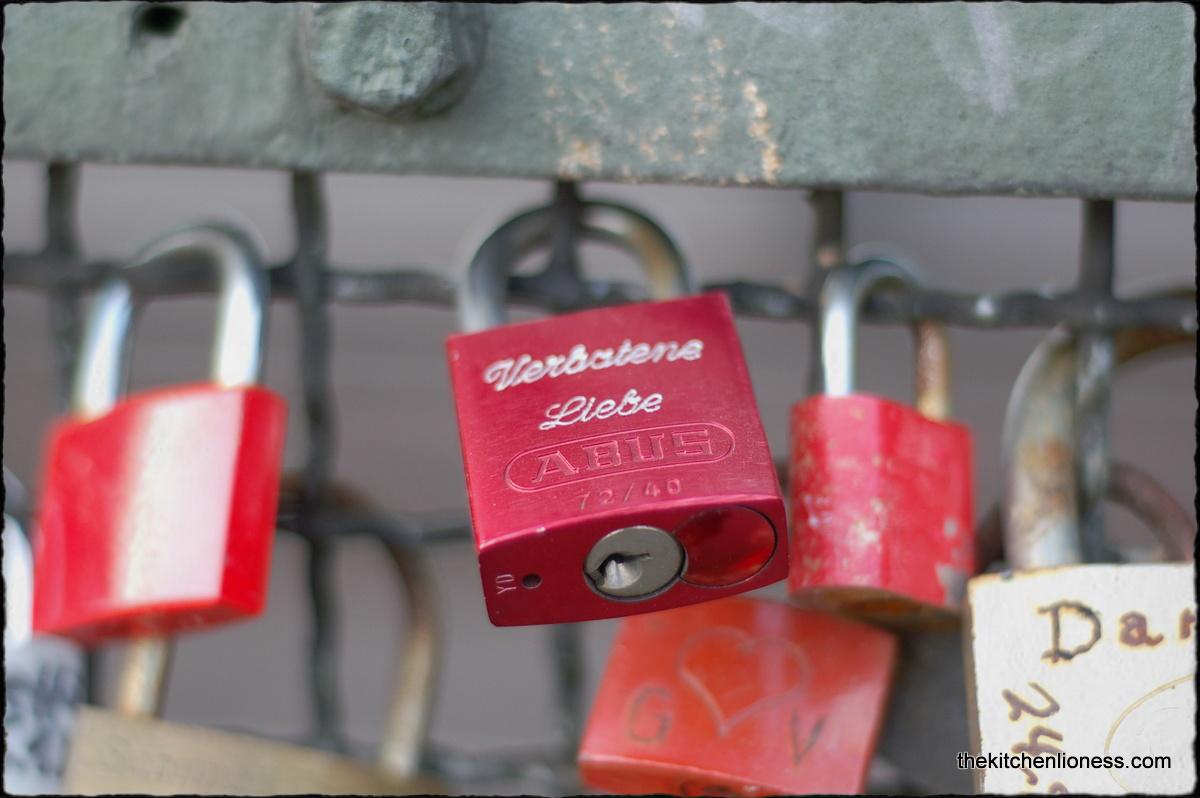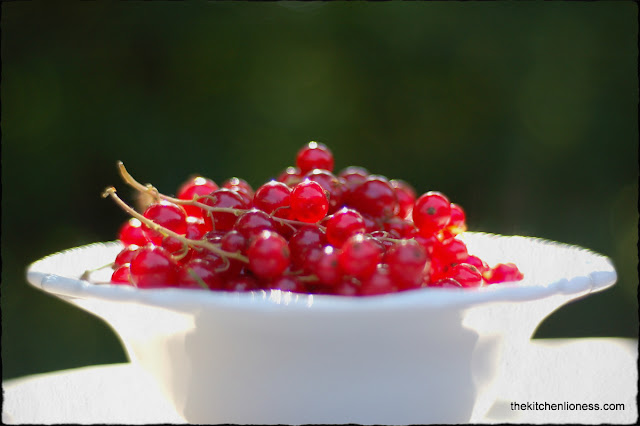Crispbread is a flat, dry bread or cracker mainly made from delicious rye flour. It has a distinctive bubbly texture and knobbly appearance. Its relatively bland flavor makes it perfect for toppings from cream cheese to smoked salmon. Crispbread or "knäckebröd" is a popular food in Scandinavian countries.
|
Knäckebrot ist ein flaches, trockenes Brot, welches hauptsächlich aus Roggenmehl hergestellt wird. Es hat einen unverwechselbare raue Textur, die meist recht rustikal aussieht. Es schmeckt wunderbar mit einem verschiedenen Belägen, wie Frischkäse und Räucherlachs. Traditionell ist Knäckebrot ist ein Grundnahrungsmittel in nordischen Ländern. |
The key ingredients in crispbread are rye flour (typically wholemeal), water and salt, though modern variations incorporate spices, nuts or seeds. Traditional crispbread is unleavened, but some recipes now use fresh or dry yeast or even sourdough to aid the formation of air pockets in the dough.
|
Die wichtigsten Zutaten für Knäckebrot sind Roggen-Mehl (in der Regel ein Vollkornprodukt), Wasser und Salz. Moderne Rezepte fügen auch noch Gewürze oder verschiedene Nüsse oder Kerne hinzu, aber auch Haferflocken finden Verwendung. Traditionelles Knäckebrot wird ohne Backtriebmittel gebacken, in heutigen Rezepten (so auch in meinem Rezept) wird gerne Hefe oder Sauerteig verwendet, um die Bildung von Luftblasen im Teig zu erhalten. |
Use can use a pegged rolling pin (also called a "Swedish rolling pin") to cover the surface of the dough with small indentations to create texture in the crispbread. There are a number of different models that create different "designs". If you don not own such a specialty rolling pin, you can just prick the dough all over with a fork before baking - otherwise your crispbread will puff up too much. Because of its dry texture, crispbread has a longer shelf life than most other breads. You can store the cooled crispbread in an airtight container for up to one week.
|
Idealerweise verwendet man ein schwedisches Nudelholz, um die Oberfläche des Teiges mit kleinen Vertiefungen zu versehen und um Struktur in das Knäckebrot zu bekommen. Wenn man kein solches Nudelholz besitzt, kann man den Teig vor dem Backen mit einer Gabel einstechen, ansonsten geht das Knäckebrot während des Backens allzu sehr auf. Aufgrund seiner trockenen Beschaffenheit hat das Knäckebrot eine längere Haltbarkeit als die meisten andere Brote. Man kann das ausgekühlte Brot in einer gut schließenden Dose bis zu einer Woche aufbewahren. |
While we like eating the famous commercial Scandinavian-style crispbreads that are available in so many stores around here, I prefer to make them myself because the resulting breads will have an interesting artisan texture to them and be thin and wonderfully crisp. A homebaked crispbread has a tendency to twist and warp in the oven, emerging with an distinct uneven quality to charm and tempt in a way a factory-baked crispbread never can and you will never be able resist snapping off a piece of your homemade ones.
|
Obwohl wir auch die berühmten kommerziell hergestellten skandinavischen Knäckebrot gerne essen, bevorzuge ich es doch, das Brot selbst zu backen. Selbst gemachtes Knäckebrot hat eine interessante, rustikale Struktur, wobei es ist ganz wunderbar dünn und knusprig bleibt. Knäckebrot hat ein wenig die Tendenz, sich im Backofen zu verziehen, doch ich finde, dass gerade diese unebene Struktur seinen besonderen Charme und Charakter ausmacht, den man bei kommerziell hergestelltem Knäckebrot vergeblich sucht. Man ist immer versucht, ein Stück des Knäckebrotes abzubrechen und genüsslich daran zu knabbern. |
Today´s crispbreads are simply a light and crunchy form of bread to eat with a meal – a modern version of the long-life doughs that accompanied long sailing trips.
|
Meine heutigen Knäckebrote sind eine leichte und knusprige Variante traditionellen Knäckebrots, welches schon vor langer Zeit die nordischen Seemänner auf ihren langen Schiffsreisen begleitete. |
What makes this Scandinavian-style bread so special is the slightly sour note that comes from the rye flour. You can use all wheat flour if you prefer, I chose part rye, part wheat flour for this recipe. With the rye flour comes a faint note, like that of toasted sourdough.
|
Was dieses Brot skandinavischen Stils so besonders macht, ist die leicht säuerlichen Note, durch Verwendung von Roggenmehl. Wenn man es vorzieht, kann man aber auch nur Weizenmehl verwenden. Für mein Rezept wählte ich Vollkorn-Roggenmehl und Vollkorn-Weizenmehl. Das Roggenmehl gibt dem Brot eine Note von geröstetem Sauerbrot. |
Swedish Crispbread
(this recipe will yield 18 big pieces or 40 small crisp breads)
Ingredients:
|
Knäckebrot (dieses Rezept ergibt 18 große oder 40 kleine Brote) Zutaten für das Knäckebrot:
|
Preparation of the Crispbread
|
Zubereitung des Knäckebrots
|
If you want to add something to this basic recipe, you can put a pinch of pumpkin seeds, nigella, sesame seeds, anise, poppy or caraway seeds into each piece of dough as you roll it, then scatter a further pinch on top before baking, pressing it down lightly with the back of a spoon. But I like my cripsbread to be plain, more natural, especially when I plan to top it with delicious spreads such as a wonderful goat cheese spread with wild flowers from a local goat cheese manufacturer that we recently discovered.
|
Wenn man diesem Grundrezept etwas hinzufügen möchte, kann man Kürbiskerne oder auch Schwarzkümmel, Mohn, Sesam und Anis in jedes Stück Teig einrollen oder zusätzlich auf das ungebackene Brot geben, dabei mit der Rückseite eines Löffels ein wenig eindrücken. Aber ich mag mein Knäckebrot eher ohne andere Zutaten, besonders wenn ich plane, es mit einem köstlichen Aufstrich zu servieren. Heute habe ich das selbst gebackene Knäckebrot mit einem wunderbar würzigen Ziegenkäse mit Wildblumen von einem regionalen Ziege-Käse-Hersteller zu serviert, den wir vor kurzem entdeckt haben. |
More than just a snack, crispbreads are the perfect base for cream cheese, smoked fish and all sorts of pâtés. And they never taste better than when you make them yourself.
|
Selbstgemachtes Knäckebrot ist weit mehr als nur ein Snackbrot, es ist ideal mit vielen verschieden Belägen wie Frischkäse, geräucherter Fisch oder Pasteten. Und kein Knäckebrot schmeckt besser, als ein selbstgemachtes. |
For more information:
|
Weitere Informationen:
|





















































